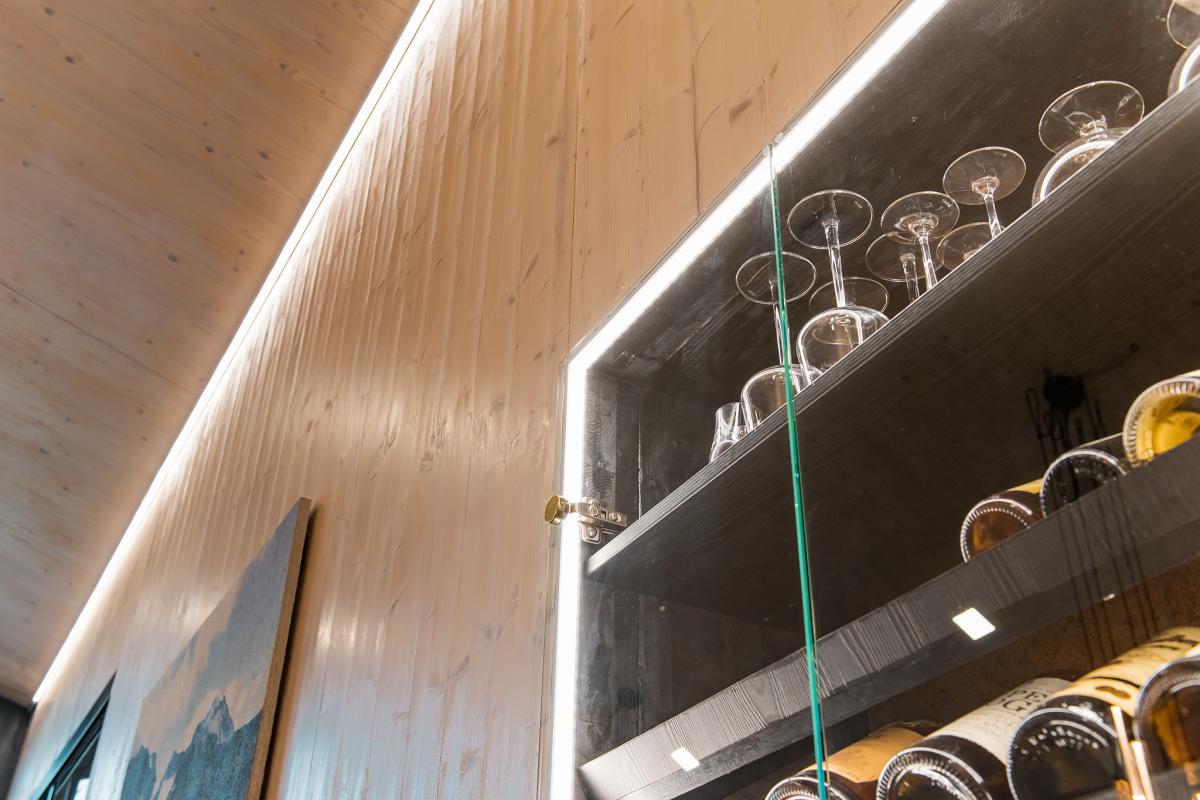
General lighting consisting of LED strips and aluminium profiles has traditionally been used in kitchens and utility rooms, where they have been mounted underneath or above cabinets to provide indirect illumination. However, the combination of LED strips and aluminium profiles is a versatile solution. Consider using them to add instant style to other spaces in your home.
Minimalistic illumination with embedded lighting solutions
General lighting created with LEDs offers a long-term solution for your house. Energy-efficient lighting pays for itself through reduced energy consumption. In addition to conventional ceiling-mounted luminaires, LED strips embedded in ceiling or wall structures can be used to create general lighting. This solution does not take up space and it blends in with the structures, highlighting the building’s architecture. It is a natural choice in a modern new build but can also be implemented in an existing building in connection with ceiling renovation, for example.
Longer service life for LED strips with a profile
An aluminium profile gives your LED strip installation a neat appearance. Airam offers a wide variety of aluminium profiles. The range includes profiles in a variety of widths and lengths for straight and corner installations. They can be used with Apus II, Norma II and Rigel II LED strips and with ballasts compatible with these. The Rigel II Flex strip, which bends sideways, can be installed on curved surfaces for effective illumination.
The opal diffusers of aluminium profiles generate pleasant and even light and obscure the individual light sources. With profiles, you can ensure straight lines of light and prolong the LED’s service life.

Tips for design and installation
- Consider luminaire locations at the construction stage. A professional lighting designer should be engaged to create the design. Professionals know where to buy LED strips and profiles, what the cost will be and how long the installation will take.
- Pay attention to the amount and colour of the light. LED strips are available in different efficacies. Consider whether you would like white 4,000 K light or warmer 3,000 K light.
- Determine the IP class you require. For dry indoor spaces, an IP20-class LED strip is a suitable choice. If you install LED strips outdoors or in wet indoor spaces, the IP class must be at least IPX4, which means it is splash-proof. For example, the Norma II LED strip designed for outdoor use has a protection class of IP65, which means it is dust-proof and protected from low pressure water jets from any direction. This makes it a safe and sensible choice for outdoor spaces.
- Consider whether you want a dimmer function for your lighting. The Norma 12V and Apus 12V can be equipped with a separate DALI or push button dimmer.
- The 230 V LED strips are connected to the mains with a separate ballast. We recommend that you hire a professional electrician to carry out installation work.